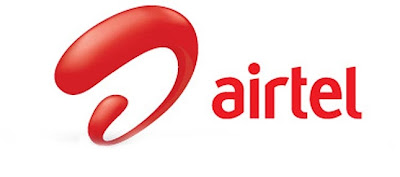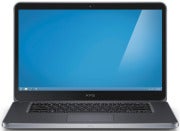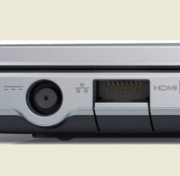
Nokia
left the computer business in 1991 when it sold its computer arm to
ICL, which then later became Fujitsu. Since then Nokia hasn't so much as
picked up a hex-head driver, until now.
Nokia's re-entry into
computer manufacturing is the Booklet 3G, which the INQ managed to get
its hands on at the Nokia World show to put together some initial
impressions.
The designers of the Booklet 3G told us that the
whole design process started with the battery, and everything else came
after that.
Nokia was asked by its customers if, with its long
history of producing phones with long battery lives, it could produce a
portable computer that also has a long battery life. Its answer is the
Nokia Booklet 3G.
The Booklet 3G battery design stems from a Nokia
1000 mAh mobile phone battery. Building around this as a power source,
the firm created a slim-line 16-cell removable battery that has been
benchmarked at 12 hours usage. However we were told by one of Nokia's
design team that it's more realistic to see around 8 to 9.5 hours of
actual battery life over an average working day.
The chassis of the
Booklet 3G is manufactured from one single piece of aircraft-grade
aluminium, with no breaks or joins whatsoever. The chassis is part of
the heat dispersal design of Nokia's netbook, as the device has no
cooling fans. Nokia has abandoned the traditional way of cooling a
portable computer with fans. Instead it uses passive heat sinks, relying
heavily on the chassis as the largest one.

With
all the netbooks we've ever seen and used, the fan always kicks in at
some point during the benchmarking process, as the CPU's heat needs to
go somewhere. When we get our review unit in for proper testing, it will
be interesting to see how the Booklet will handle processor intensive
tasks, such as video encoding or even HD flash playback.
The
Booklet's screen doesn't display an image that's as sharp and distinct
as we're used to. The 10.1-inch glass display is reminiscent of the
first Asus Eee PC netbooks that came out way back in 2007. Those were a
little blurry as a result of the cheapness of the build and the material
used in TFT LCD technology, and the Nokia Booklet 3G harks back to
those days, whereas other netbook makers have moved away from those
screens.
On a more positive note, the screen is capable of displaying
a resolution of 1280x720 pixels. This isn't the normal resolution seen
in 10-inch screens, as 1024x600 is more commonly found in netbook
displays of this size.

The
Nokia Booklet has a very slim design, one of the thinnest that we've
seen in a first generation model. Its overall thickness is just 19.9mm,
which is only five millimetres more than the thickness of the Macbook
Air. At the same time the Booklet has a much smaller overall footprint
at 264mm wide and 185mm deep, compared to the massive 325mm width and
227mm depth of Apple's flagship ultra-portable computer.
Nokia's
Booklet 3G does have a neat, substantial appearance to its overall build
that gives the impression of a very well designed and over-engineered
device.
On the right-hand side of the device is a flap, which upon
opening exposes its SIM slot and the SD card reader. The latter doesn't
support the higher capacity SDHC cards, but that's neither here nor
there as we're more interested in the SIM functionality rather than
whether it has removable storage with more than 4GB capacity.
The SIM
card is very easily accessible and not buried away under the battery or
anywhere else that's obscure, as is too often seen in other netbooks.
The SIM card is also hot-swappable without powering down or rebooting
the system. This could aid peace of mind for those who might be worried
that the Booklet isn't using WiFi and instead could be running up large
data bills on their mobile contract, although all connections are easily
managed by the OS software.
The built-in 3G/HSPA modem can only be
used for data calls, over WCDMA 900/2100 or 800-850/900/2100 GSM. No
details are being made public by Nokia as to what chipset it has used
for this modem, despite the INQ's repeated questioning of various
members of Nokia's hierarchy. As the Finnish company does have good ties
with Texas Instruments and its OMAP chipsets, it's a fair assumption
that one of those has been used here, and Nokia didn't discourage the
notion.
The netbook has the Intel Poulsbo US15W mobile chipset with
HD PowerVR SGX graphics, all of which is driven by an Intel Z530 1.6GHz
processor. It's not one that's usually seen in netbooks, more in Media
Internet Devices (MID), although it was also Dell's choice for its Mini
10 netbook. It seemed powerful enough to handle everything we threw at
the Booklet.
We never got around to asking about the keyboard at
Nokia's event, which we regret as it's a rather unusual design and one
we thought must have a story behind it. The keys are somewhat spaced out
and separated from each other, with some distance in between them all.

In
action, we actually found the keyboard rather easy to use and we're
reluctant to say, difficult to part with, as we found it quite well
suited to our two-finger method of typing down to the ground.
There
are some other well thought out niceties included with the Booklet 3G,
such as Nokia's Ovi suite, access to Nokia's Music for the PC, a 120GB
Toshiba hard drive, HDMI and audio jack.
The audio jack can be used
with a standard Nokia wire hands-free kit. The kit often found in a
phone's retail box, which has the mic, earpiece and an all-in-one 3.5mm
jack like the Booklet's audio jack, fits perfectly. Thanks to the
chipset used in the netbook, HDMI out and even 1080p should be possible,
although the Booklet doesn't have a VGA port.
As it runs Windows 7, don't expect the Nokia Booklet 3G to be on the shelves until sometime near the end of October.
In Short
As
a first attempt at a netbook by a phone manufacturer, Nokia's Booklet
3G is a very impressive effort. The engineering and design work, and the
thought that have obviously gone into the Booklet 3G do shine through.
We
have our reservations about the heat output as this netbook is fanless,
but we're open to being convinced that it's a good design after we
fully test it. We also have a minor reservation about the battery, but
once again until we thoroughly put it through its paces we'll reserve
our final judgment.
Specification Intel Atom processor
HD Ready 10.1-inch display
Integrated 3G HSPA wireless with hot-swappable SIM card slot
Windows 7 OS
Integrated A-GPS with a copy of Ovi Maps
HDMI output
SD Card Reader
3 USB 2.0 connectors
Front Facing Webcam
12 hour battery life claimed
Bluetooth and WiFi connectivity
2cm (.78 inch) thickness
Lightweight 2.7lb aluminum body






 Just when you thought the CES fun was coming to an end…The VAIO S isn’t a new laptop per se but the announcement of a custom built option is certainly welcomed. This little mobile machine originally launched in Spring of last year and is a lightweight option for a road warrior or a business traveler. All VAIO S models (be it pre-built or custom built) have 13.3 inch displays. The computer is about 1” thick and weighs just over 4 pounds. So again. Pretty light.
Just when you thought the CES fun was coming to an end…The VAIO S isn’t a new laptop per se but the announcement of a custom built option is certainly welcomed. This little mobile machine originally launched in Spring of last year and is a lightweight option for a road warrior or a business traveler. All VAIO S models (be it pre-built or custom built) have 13.3 inch displays. The computer is about 1” thick and weighs just over 4 pounds. So again. Pretty light.










 Zeebiz Bureau
Zeebiz Bureau







